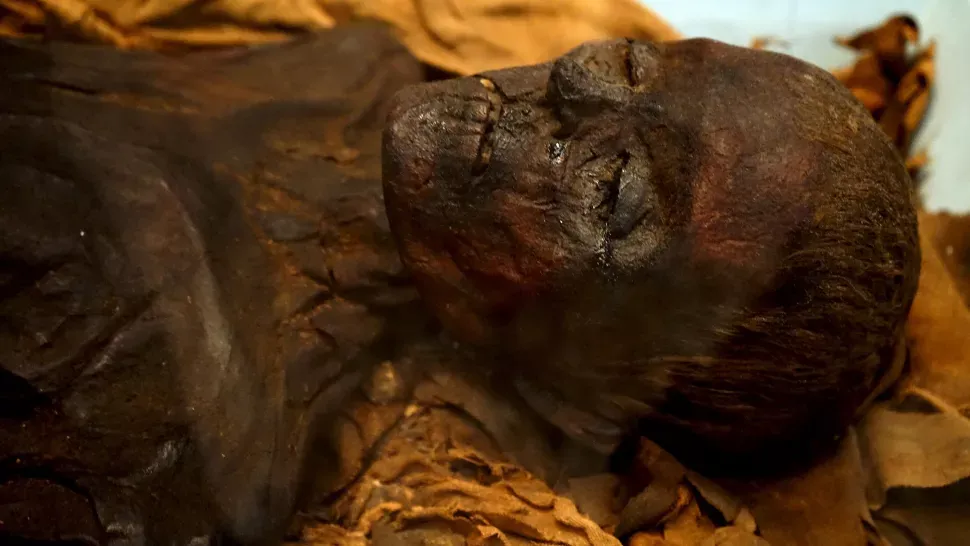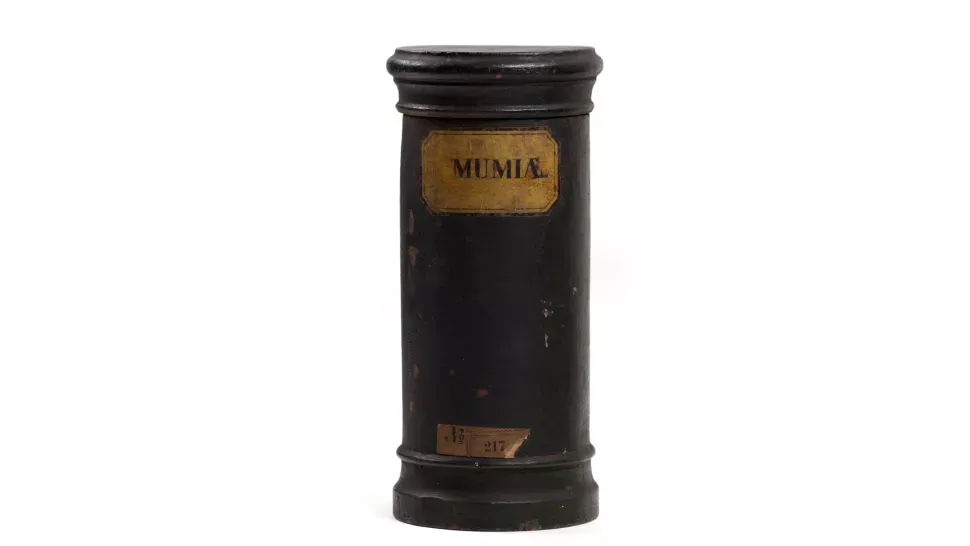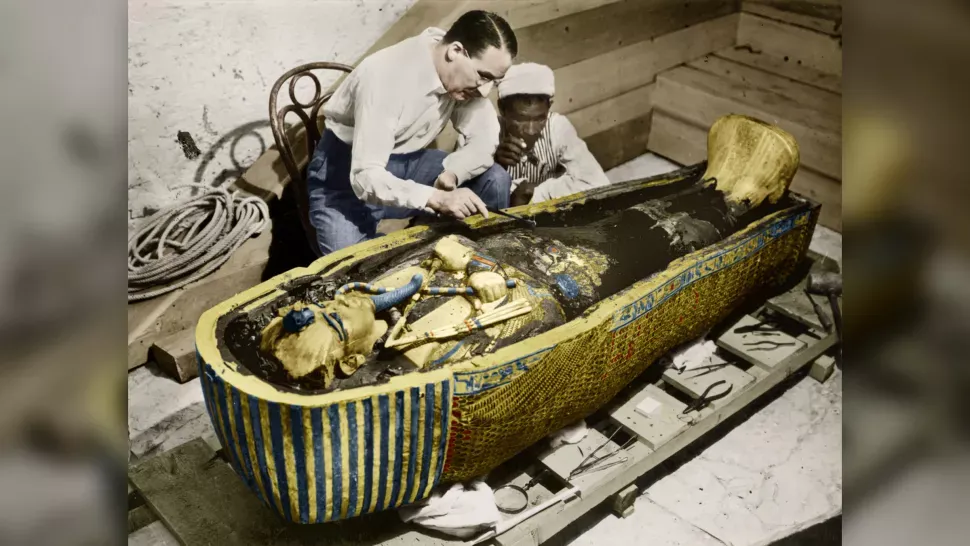Why do many people think cannibalism improves their health? The answer below provides a glimpse into the most interesting things in European history, at a time when people were overly obsessed with Egyptian mummies.

The mummy of an unidentified woman was discovered in Thebes, Egypt and dated to around 700 BC.
First, they did so because they believed that ancient mummies had the ability to cure many diseases from plague to headaches, then because of the entertainment needs of Victorian aristocrats. Thousands of years old coffins have always been a very attractive topic for Europeans from the Middle Ages to the 19th century.
The belief that mummies can cure diseases has led people for centuries to accept a terrible taste experience. Mumia, the product created from mummies, is a medicinal substance consumed by rich and poor for centuries. This medicine is readily available in drug stores and is created from the remains of ancient Egyptian mummies.

Mumia – the elixir of Europeans for many centuries
In the 12th century, apothecaries used pureed mummies as medicinal ingredients. The mummy has since become an indispensable ingredient in many prescription drugs for the next 500 years.
In a world without antibiotics, doctors prescribed skulls, bones and ground meat to treat a variety of ailments, from headaches to reducing swelling or curing plague.
However, not everyone believes in the miraculous effects of this medicine from the ground. Guy de la Fontaine, a royal physician, suspected mummies were an ineffective medicine; he encountered a large number of fake mummies made from the corpses of dead farmers in Alexandria in 1564.
Fake mummies are just a product born when supply exceeds demand. The constant demand for dead human flesh in medicine has been greater than the number of available corpses.
Not all doctors believe that old, dry mummies are the best medicine. Some doctors believe that fresh meat and blood have a magical effect that long-dead people do not have.
The above statement convinced even the noblest of the aristocratic lineage. For example, King Charles II of England used medicine made from the skull of a person with epilepsy. Until 1909, doctors always used human skulls to treat neurological diseases.
For the royal class, using medicine made from mummies helped them show off their status, because doctors said they belonged to the bodies of noble pharaohs.
By the 19th century, people no longer consumed mummies for medical purposes, they upgraded their level of monstrosity. The Victorians held “unwrapping parties” where Egyptian mummies would be unwrapped as horror entertainment.

British Egyptologist Howard Carter (1873-1939) and a colleague examine the golden coffin of pharaoh Tutankhamen in Egypt in the early 1920s
Napoleon’s first expedition to Egypt in 1798 aroused European curiosity, paving the way for mummy deals from the west. So the new trend began.
Unlike the powerful, the “unpacking party” of medicine is taken very seriously. In 1834, surgeon Thomas Pettigrew “unwrapped” the mummy at the Royal College of Surgeons. In his day, autopsies and surgeries were public, and unpacking was like other public health events.
But then, it was considered an entertainment tool that created a feeling of excitement mixed with fear for the mass audience. An MC can earn a huge amount of money if he unwraps a mummy in front of an audience. The thrill of seeing bones and dried flesh appear behind the ice was something everyone wanted to experience at that time, whether the venue was a private home or a theater, the seats were always full.
Mummy opening parties gradually ended as the 20th century began. The creepy thrill seemed to lose its appeal, and the trend began to decline.

Then, the discovery of pharaoh Tutankhamen’s tomb blew a new breeze into the field of art deco design and shaping, from door motifs in the Chrysler Building to watch shapes designed by Cartier. .
The sudden death in 1923 of Lord Carnarvon, the sponsor of the Tutankhamen expedition, was due to natural causes but was later rumored to be the price of trespass to the gods or the “mummy’s curse”. .
In 2016, Egyptologist John J. Johnston publicly staged the unwrapping of a mummy for the first time since 1908. The performance combined artistic performance techniques with scientific knowledge revives Victorian-era unwrapping parties. The mummy was actually just an actor wrapped in bandages, but the event was no different from a feast for the senses. The show is a reminder to the modern generation that the mummy has gone through a very long historical journey.
Today, the market for smuggling black antiquities – including mummies – is worth about $3 billion. No archaeologist unwraps a mummy himself or no doctor turns them into medicine anymore, but thousand-year-old corpses are always a fascinating topic for us. They are still sold, still exploited, and still a commodity.